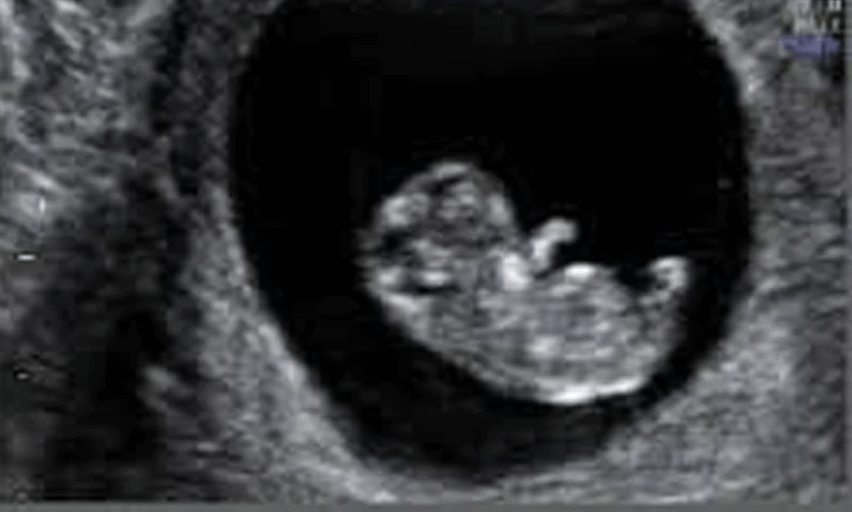Introduction
Are you eagerly awaiting your 8-week ultrasound appointment to catch a glimpse of your growing baby? Get ready for an unforgettable experience as you witness the heartbeat display in action! This magical moment is sure to leave you feeling amazed and overjoyed. In this blog post, we’ll take a closer look at what happens during an 8 weeks pregnant ultrasound and how the heartbeat display works. So sit back, relax, and get ready to be swept away by the wonder of pregnancy!
What is an ultrasound?
An ultrasound is a diagnostic tool that uses sound waves to create an image of the inside of the body. It is also called a sonogram. They can also be used to look at a baby during pregnancy.
Ultrasounds are usually done by a trained technician or doctor. A gel is first placed on the skin over the area being examined. The gel helps the sound waves travel from the transducer (a hand-held device) to the body. The transducer is then moved over the gel-covered area.These impulses are then displayed as images on a computer screen.
Best time to have an ultrasound?
There are a few different reasons why you might have an ultrasound during your pregnancy. Your doctor may recommend one to check on your baby’s development, or to investigate a potential problem. You might also choose to have one for peace of mind, or to find out the sex of your baby.
The best time to have an ultrasound depends on the reason for the scan. For example, if you’re having an ultrasound to check on your baby’s development, the best time is usually between 18 and 20 weeks. This is when most babies are big enough for an accurate assessment, and when there are still enough fluid around them to get a clear picture.
If you’re having an ultrasound because of a potential problem, the timing will depend on what the problem is. For example, if you’re at risk for preterm labor, you’ll likely have an ultrasound around 24-32 weeks. This can help your doctor keep an eye on things and make sure that everything is progressing as it should be.
In general, earlier ultrasounds (before 14 weeks) tend to be more accurate in terms of predicting your due date. Later ultrasounds (after 28 weeks) are more useful for assessing baby’s growth and development. So if you’re just looking for general information about your pregnancy progress, somewhere in the middle is usually best.
Of course, this isn’t set in stone – every pregnancy is different, so ultimately it’s up to you and your doctor to decide when. read more
What will I see during an ultrasound?
1. During an ultrasound, you will see a black and white image of your baby on a screen. You will also be able to hear your baby’s heartbeat. Your doctor or a trained technician will perform the ultrasound.
What do the results of an ultrasound mean?
If you’re like most expectant parents, you’re probably wondering what all those ultrasound images of your baby really mean. After all, it’s not every day that you get to see a picture of your unborn child!
Ultrasound images can be confusing, but the results of an ultrasound don’t have to be. Here’s a quick rundown of what the different measurements and images on an ultrasound mean:
– The gestational sac is the first thing that appears on an ultrasound, usually when the pregnancy is about five weeks along. It’s a clear sac filled with fluid that surrounds the embryo.
– The yolk sac is next to appear on the ultrasound. It’s a small round sac that provides nutrients to the embryo during development.
– The fetal pole is the earliest image of the developing fetus. It looks like a small bump on the gestational sac and can be seen as early as six weeks into pregnancy.
– The heartbeat can be detected as early as six weeks into pregnancy, but it may not be visible on an ultrasound until 10-12 weeks. Seeing (and hearing!) a strong fetal heartbeat is one of the most reassuring things for expectant parents!
How accurate are ultrasounds?
Ultrasounds are generally considered to be very accurate. In most cases, they can detect a baby’s heartbeat as early as six weeks into a pregnancy. However, there are some instances where an ultrasound may not be able to detect a heartbeat. This can usually be due to the position of the baby or placenta, or if the pregnancy is earlier than six weeks.
What are the risks of having an ultrasound?
There are a few risks associated with having an this, but they are generally considered to be very low. The most common risk is that of false positives, where the ultrasound indicates that there are problems when there aren’t any. This can lead to anxiety and unnecessary worry for the parents. There is also a small risk of burning or skin damage from the ultrasound waves, but this is rare. Finally, there is a very small risk (less than 1 in 10,000) of the ultrasound causing a miscarriage.
Conclusion
An ultrasound of your baby during the 8th week of pregnancy is an exciting milestone in your pregnancy journey. Seeing your little one’s heartbeat and even hearing it on the machine can bring a feeling of joy and wonderment for both parents. As you continue to monitor the health and development of your baby, make sure to consult with a doctor or specialist if any concerns arise regarding their growth or development. Be sure to take plenty of pictures so that you can always look back fondly at this incredible moment in time!
